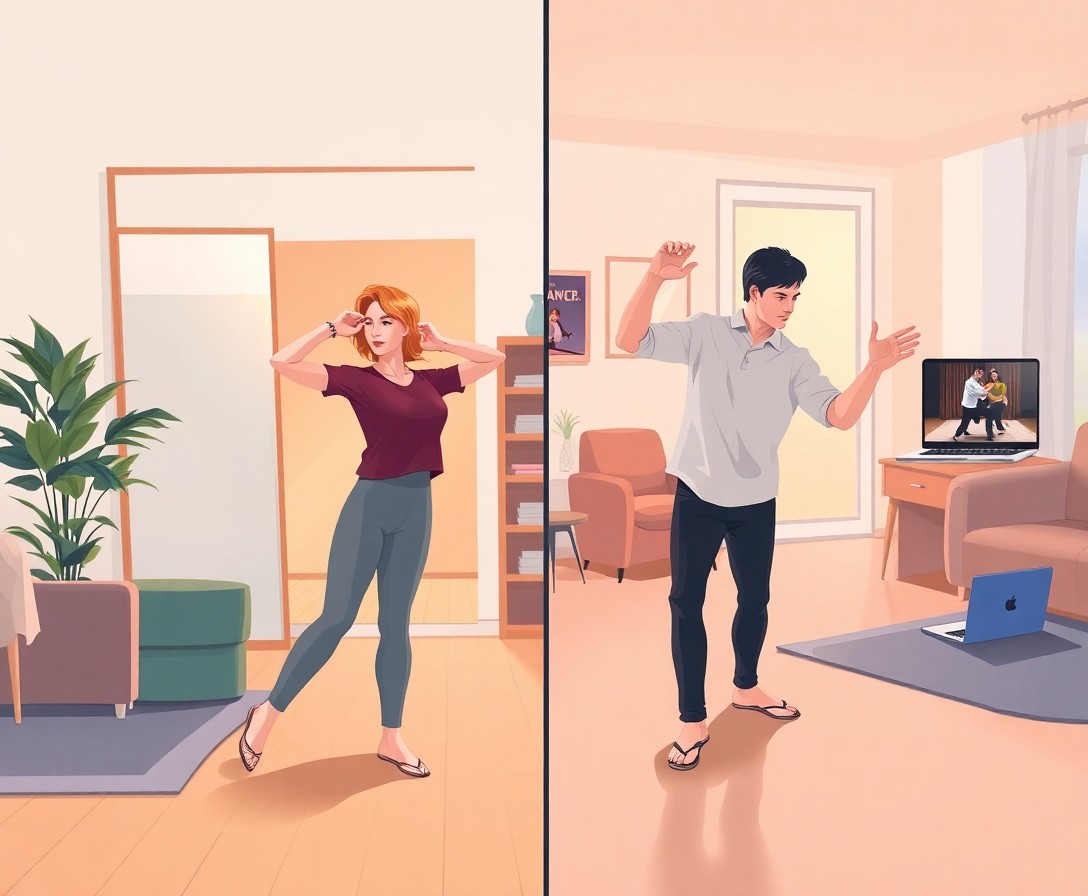🕺 The Principles of Individual Technique in Kizomba & Urban Kiz
Why it matters, what it gives you, and which mistakes it helps eliminate
In the world of Kizomba, Kizomba Fusion, and Urban Kiz, many dancers dive straight into patterns and choreography. But what truly sets apart a skilled, musical, and connected dancer is something much more fundamental: individual technique. 🎯
🔍 What Is Individual Technique in Kizomba Styles?
Individual technique is the way you control and use your own body—before you even think about partnering. It’s the foundation of smooth, expressive, and connected movement. In Kizomba and Urban Kiz, this includes:
- 👣 Foot placement and weight transfer – Stepping silently, clearly, and on time
- 🧍 Posture and body alignment – Keeping a strong, elegant presence without tension
- ⚖️ Axis and balance control – Staying grounded in pivots, stops, and changes of direction
- 🌊 Body isolation and movement control – Especially in Urban Kiz, where musical accents and breaks are often expressed through body rolls, stops, and waves
- 🌀 Ginga (for follows) – The personal, rhythmic body movement that adds flavor and flow
- 🎚️ Controlled energy flow – Using just the right amount of tension and relaxation
These techniques are what make your movement look effortless and feel amazing to your partner.
✨ Why Individual Technique Matters
- 🤝 Better Connection
- Strong technique means better control of your own balance and axis—key for clean leading and comfortable following.
- 🎵 More Musicality & Expression
- With solid control, you can play with rhythms, pauses, and body movement. Urban Kiz especially demands high-level musical interpretation, and technique is what allows you to hit those details with intention.
- 🔁 Cleaner Execution of Patterns
- Many dancers struggle not because the step is hard, but because their weight is unclear or their posture is off. Good technique lets you glide through movements instead of fighting them.
- 🛡️ Less Fatigue, Fewer Injuries
- Good technique = efficient movement. Your body works less and feels better—even after hours of dancing.
📌 Common Mistakes Technique Can Solve
- 🚶♂️ Dragging or stomping steps
- 🤷♀️ Unclear weight shifts
- 💫 Losing balance in pivots and direction changes
- 🧊 Stiff or disconnected upper body
- ⚠️ Overleading or overfollowing due to lack of control
- 🪞 Styling that looks forced or out of sync
These are all symptoms of weak fundamentals—and the cure is individual technique. 💡
⏱️ Why It's Often Overlooked
In most classes, teachers simply don’t have the time to break down every detail of technique. The focus is on steps, connection, and musicality with a partner. That’s why working on your technique is something you must take on independently—and it’s what will truly accelerate your growth. 🚀
🧘♀️ How to Practice Individual Technique
- 🐢 Slow down – Practice movements slowly and intentionally
- 📹 Film yourself or use mirrors – Visual feedback is your best friend
- 🎯 Focus on one thing at a time – Don’t try to fix everything at once
- 🎓 Take technique-focused workshops or privates – Find teachers who emphasize body mechanics
- 🔁 Repeat consistently – Technique is a habit, not a trick
🧾 Examples of Individual Techniques to Practice
Here are a few practical examples you can start working on today:
- ✅ Walking in slow motion, focusing on silent steps and clean weight transfer
- ✅ Practicing balance by pausing mid-step on one foot without wobbling
- ✅ Isolating chest and hips for more fluid body movement
- ✅ Standing drills for posture and axis control (e.g. back against a wall to align spine)
- ✅ Ginga practice with basic steps to build confidence and flow (for follows)
- ✅ Leading with minimal energy to refine control (for leads)
🧩 Want to Go Deeper Into Technique?
If you're ready to really dive into your solo work, there are structured programs designed specifically to help dancers build strong technique, body awareness, and musicality. One excellent example is KizFit—a program created by renowned dancers Albir Rojas and Natalia.
It focuses on movement drills, body control, strength, and flow—all essential for dancing Kizomba and Urban Kiz with grace and confidence. If you're curious and want to try it for yourself, visit mkiz.dance and look for the KizFit section. It might be exactly what your dance needs right now. 💪
👣 What’s Next? Let’s Talk Footwork
In the next article, we’ll dive into one of the most essential components of technique: footwork. From proper foot placement and rolling technique to transitions and timing—your steps are where everything begins. Stay tuned! 📝
